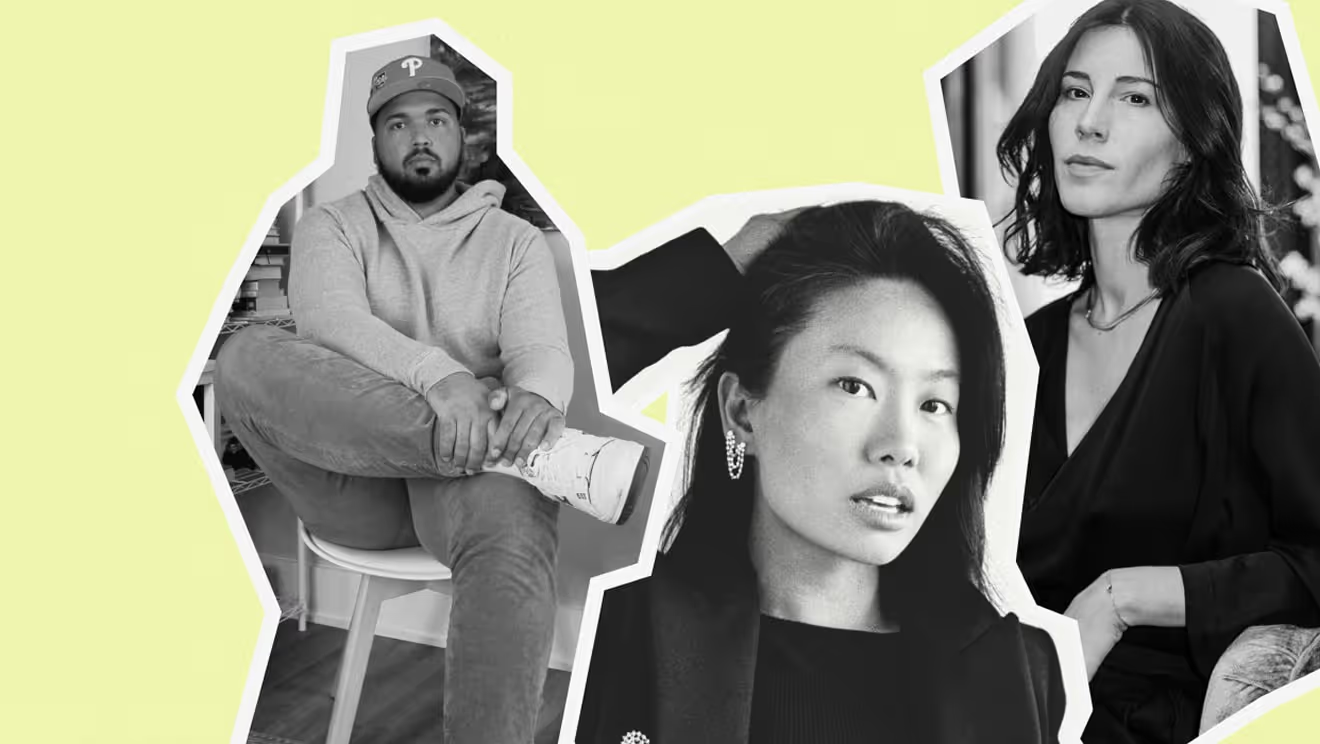Now, as Head of Partnerships at RX3 Growth, she continues to lead brand growth strategy for an impressive portfolio of clients, in addition to working as an angel investor and strategic advisor to consumer brands across industries. Our Brand Marketing Lead, Maria Beer, had the pleasure of chatting with Kira about the power of partnerships, the importance of your core consumer base and how to stand out among "the noise" during this busy time of year. Here’s a glimpse into their conversation.
MB: Starting broad — how can brands, especially early-stage brands, take advantage of seasonal marketing whether it's end-of-year campaigns or looking ahead to the new year? How can this strategy shift for brands with a large suite of product offerings vs. small?
KJM: There’s so much to consider with seasonal campaigns, however, across the board, they are a huge opportunity to increase average order value.
For brands with broader product suites, there are so many opportunities through creating higher AOV gift sets or programs that encourage consumers to "buy one, gift one." Another strategy I love is running a campaign with multi-day offerings, where there are different perks offered across consecutive days, incentivizing a customer to come back and shop two or three times.
If you’re a brand with one product or a limited product line — for example, Seed Health — seasonal campaigns are great for incentivizing higher AOV through programs like subscription offerings — taking advantage of the fact that people are more willing to shop and gift.
Though not necessarily AOV-focused, I also love the idea of creating partnerships around your seasonal campaign — co-creating something with an influencer in your niche, or doing a like-minded non-competing brand partnership that allows you to capitalize on top-of-funnel buzz while also giving your consumer something new to try is extremely valuable.
MB: Such great advice — speaking of partnerships, what are your thoughts on pinpointing a good partnership and / or partner?
KJM: Partnerships are so valuable when tapped at the right time — and when done right can certainly help a brand rise above "the noise." I do often see brands launching partnerships before they've fully developed their own brand. That can easily hurt more than help — if you haven't built a brand ethos, voice, message or solidified a consumer base, you run into the possibility of diluting your brand before you’ve fully developed it.
Once you have that foundation, there are a couple of routes you can take when it comes to partnerships. Broadly, there's the talent partner and there's the brand partner. If looking for a talent partner — i.e. an influencer or celebrity, it’s integral that you be really strategic about who you partner with. Of course, the talent should fit within your brand story — but additionally, looking into the numbers behind their audience is so important. Ask questions like, "What does their following look like?", "Who is their core demographic?", "What’s their engagement like?", etc. You should be looking for some level of overlap, but also looking for new subsets of demographics that you could start to market to — that really makes a partnership impactful.
On the brand side, if you're building a like-minded, non-competing partnership, sharing customer lists and access is paramount — and having a clear understanding of your potential partner’s core consumer is at the core of success in a symbiotic brand partnership. Asking questions that go beyond "Do their consumers fit our demo?" is key. I would consider questions like, "Does this brand’s core consumer have disposable income?", "Do they have interest and appetite within my brand category?", "Do they already own my product?", etc. If the answers to these questions are in alignment with your goals for the partnership, that’s a great foundation for a successful collaboration.

MB: I love that, it all comes back to the consumer. One trend we’ve been seeing recently in the partnership space is the "unconventional partnership" — for example, Lisa Says Gah x Hunt's Tomato Sauce or Tito's x Martha Stewart — what are your thoughts on tapping that kind of unexpected partnership vs. a super cohesive one?
KJM: That's a really great question, it all comes down to your goal. In general, when doing a super cohesive partnership, you're playing for conversion — to acquire a customer and then convert that customer. When doing a more surprising, out-of-the-box partnership, you're not necessarily trying to acquire a consumer, you're more so leveraging the partnership to bolster brand equity or target a different storytelling avenue than you might otherwise have access to. With the Lisa Says Gah x Hunt's example, one is in the food category, one is in fashion — neither are trying to jump categories, but the collaboration does allow them to play and story-tell in a different space, which builds a lot of top-of-funnel awareness and buzz.
MB: I’m curious — when it comes to partnerships (or general campaigns), where do you recommend early-stage brands put their focus: growth and building that brand equity, or conversion and retaining high-value customers? How do you balance the two goals?
KJM: Balancing the two is challenging, but so important — I’m seeing so many brands shifting marketing budgets down and I'm shouting from the rooftops to maintain budget, but do so from a retention lens. Especially at this time of year, when you're fighting for so much inbox space and wallet share, your job as a marketer is to maintain your core consumer base. For very young companies, of course, they are still building that core base, so, in that case, I would say in this season and economic client, any focus on customer acquisition needs to be matched with retention efforts. There are many different ways to achieve this, for example, this could be the time of year to tap your current community with campaigns around sharing your brand or product with a friend — whatever your approach, that core base cannot be forgotten in your strategy.

MB: 100%, such good advice — so important to keep that core base top of mind. Lastly, is there a brand that you feel has been balancing it all — in the partnership space and beyond — and successfully rising above the noise?
KJM: Ahh this may be basic but I’m going to say SKIMS! SKIMS recently launched their men’s category and I thought the campaign was incredibly smart. I have gotten some flack for this take, some felt the athlete partnerships were expected, however, there was a ton of nuance behind the campaign that I thought was super strategic. First, the timing. They launched this brand new category ahead of BFCM — a time when consumers are sitting on their wallets, waiting to buy things for the holiday season — SKIMS gave them a reason to use their credit cards *before* Black Friday, and on the inventory side, gave themselves enough time to sell out with the campaign launch, then restock for Black Friday, and likely sell out again — brilliant!
Talent partnership-wise, initially, I would have expected a partnership with a well-known celebrity couple to launch the expansion into the men's category, but then I thought about the global presence SKIMS has, their market outside of the US is sizable, and the focus on athletes — a basketball star, a soccer star, and a football star — targets demos not only in the US but on a global scale. How clever to tackle all three industries in one fell swoop!? Additionally, though geared to a new customer segment, their core audience certainly still loved it.
Though ultimately time will tell the impact this campaign has on the longevity of the category, I think it's an example of a very well-built campaign — incorporating talent partnerships strategically and timing a launch in a sweet spot that’s smart for both conversion and generating buzz.









